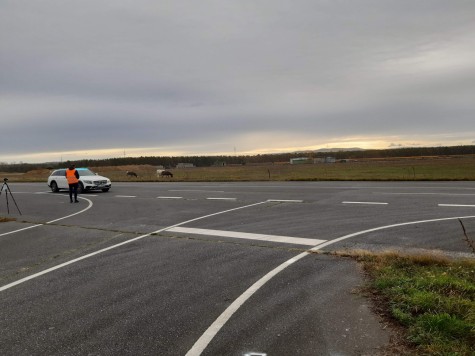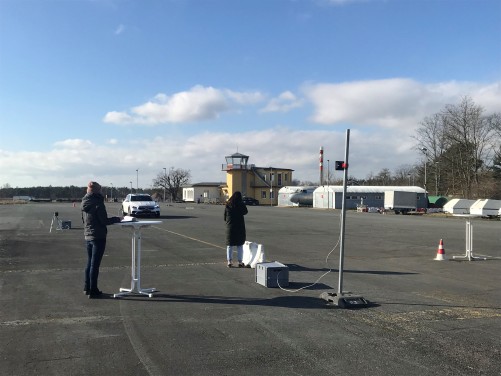The historic August Euler Airfield in Griesheim, owned by TU Darmstadt since 2005, provides ideal conditions for conducting field studies for more than ten university institutes. At the Institute of Human Factors and Ergonomics, we utilize the airfield as a unique testing ground for our research on human-vehicle interaction, focusing on the development and evaluation of innovative technologies such as driver assistance systems, automated vehicles, and external human-machine interfaces.
Data can be collected here in a realistic yet controlled environment, enabling precise analysis of user behavior, human-vehicle interactions, and the effects of specific variables. Unlike public roads, the reproducible testing conditions offer high comparability and allow targeted investigation of various scenarios. A wide range of traffic situations – from urban environments to rural roads and highways – can be realistically replicated. The infrastructure can also be flexibly adapted to specific testing requirements using temporary traffic signs, road markings, and cones.
Since no permits for public road use are required, technologies such as driver assistance systems, V2V communication, prototypes, and vehicles equipped with external human-machine interfaces can be tested under realistic conditions even in early development stages. This helps reduce testing costs and accelerate development processes. The secure testing environment also allows risk-free trials of extreme situations, such as emergency braking, evasive maneuvers, or dynamic lane changes.
For example, a longitudinal user study conducted at the August Euler Airfield examined pedestrian behavior during repeated interactions with a highly automated vehicle. The vehicle was equipped with an external human-machine interface – a light strip on the roof that displayed various light patterns in different test scenarios to communicate with pedestrians.
The airfield serves as an invaluable testing environment, enabling us to advance research and development in human-vehicle interaction in a realistic, safe, and efficient manner, always aiming to optimize the interaction between humans and vehicles.
If you would like to learn more about our work at the airfield, you are welcome to contact us using the contact button on the right. Your enquiry will then be forwarded directly to our experts. Additional information is available here: https://www.tu-darmstadt.de/universitaet/campus/windkanal_flugplatz/index.de.jsp.









